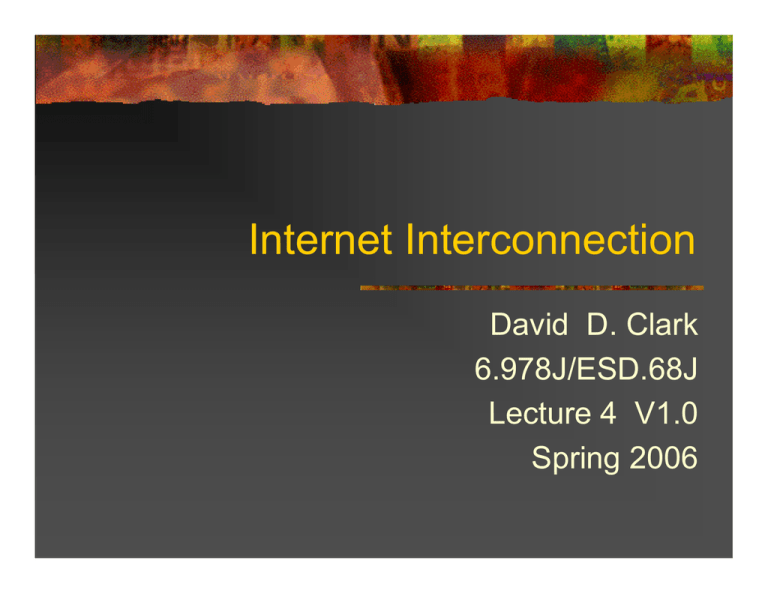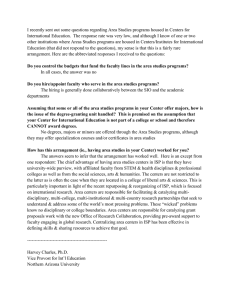Internet Interconnection David D. Clark 6.978J/ESD.68J Lecture 4 V1.0
advertisement

Internet Interconnection David D. Clark 6.978J/ESD.68J Lecture 4 V1.0 Spring 2006 The fundamental problem On what basis should competing ISPs interconnect so that the global Internet can happen? They have to interconnect. They are fierce competitors. The traditional Internet picture User User User User Little ISP Little ISP Little ISP Backbone (big ISP) User Backbone (big ISP) User User User Little ISP Backbone (big ISP) Little ISP User What constrains that picture? Money routing. Packets are an excuse to make money… And old and possibly true story. “I thought you were going to pay me money.” Or: how not to trade in a car. The result: revenue-neutral peering, or “money insulators”. The money picture User User User User Little ISP Little ISP Little ISP Backbone (big ISP) User Backbone (big ISP) User User User Little ISP Backbone (big ISP) Money flow Not packet flow Little ISP User The two modes Transit: small ISP pays large ISP to deliver packets to/from anywhere. Peering: two ISP agree to exchange packets for free. Normally, only packets destined for each ISP and its transit customers. Normally, no payment. Dig deeper--why? Internet has no expression of value flow. No “800” numbers. Packet flow not the same as value flow. (No concept of a “call”.) We were proud of that. So, two rough arguments. 1) 2) You were going to get the traffic anyway. Some sort of symmetry. No payment = symmetric value Much too simple analysis: N1 users ISP1 ISP2 N2 users Value to ISP1: N1*(V1-2*N2) Value to ISP2: N2*(V2-1*N1) If V1-2 = V2-1, terms are equal. Relative size does not matter. What actually happens Equal size No relative market power. Balanced packet flows. Assume the value uncertainty balances out. What is wrong? Peering points are sometimes congested. Hard to negotiate about upgrade. ISPs cannot offered assured end to end service. Small players distort themselves to balance packet flow. Perhaps there is a real inefficiency. Value is not symmetric. Revenue neutrality is easy, but unjustified. Evidence Internap: giving Amazon (and others) assured access to their users. Emerged to serve a specific value flow. Makes it possible to find the valuable packets. Looks like “paid peering”. Internap Amazon User Internap User User User Little ISP Little ISP Little ISP Backbone (big ISP) User Backbone (big ISP) User User User Little ISP Backbone (big ISP) Little ISP User Why don’t ISPs fix the problem? Still have the fundamental problem. No way to find direction of value flow. Internap does it with physical path. Negotiation might trigger antitrust concerns. Negotiation with competitors still hard. Look for “cable alliance” and “telco aliance”. What is really wrong? It is not just the inefficiency of peering. But note the recent posturing from SBC It is the inability to create and offer new services. Evidence: The (non-)history of Quality of Service. Akamai The phone company story Very different history. Interconnection is regulated. Simple, well understood service. Different revenue model (sort of). Access charges and settlements. Question for discussion: should we regulate Internet interconnection?


